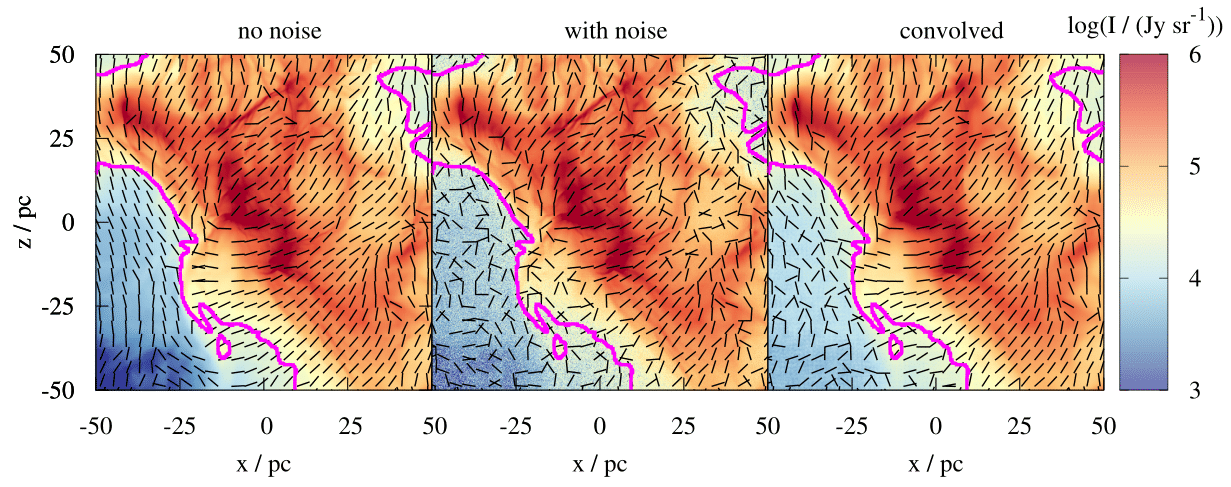Synthetic dust polarisation maps of simulated molecular clouds
Molecular clouds form from the magnetised diffuse ISM and thus inherit the magnetic field present on larger, galactic scales. Due to gravitational compression and turbulent motions, the magnetic field is amplified reaching typical values of $10$ to $100 \mu$G in the clouds. The orientation (and strength) of the magnetic field can be measured by means of dust polarisation observations. The polarisation is caused by reflection of light on elongated dust grains, which are aligned with the magnetic field lines. We present synthetic dust polarisation maps of 3D magneto-hydrodynamical simulations of molecular clouds ( Seifried et al. 2019), which are produced with the POLARIS code.We address the open and widely discussed question about the origin of the observed depolarisation in molecular clouds: We show that dust grains remain well aligned even at high densities ($n > 10^3 \mathrm{cm}^{-3}$) and visual extinctions ($A_V > 1$). The depolarisation is caused mainly by strong variations of the magnetic field direction along the line-of-sight due to turbulent motions. Furthermore, between $70 \mu$m to $3$mm, the polarisation pattern is remarkably independent of the wavelength with differences only of a few degrees, and it is relatively robust when decreasing the spatial resolution as it would be the case e.g. for observations of more distant clouds.
Noise effects can be reduced by convolving the observed image. In general, we find that the underlying magnetic field structure can be traced with an accuracy of 5 - 10 degree in regions with intensities above 2 times the noise level and column densities above $1 M_{\odot}$ pc$^{-2}$. However, dust polarisation observations of molecular clouds are less reliable in regions with low polarisation degrees and possibly in regions with large column density gradients, e.g. where shocks occur.
